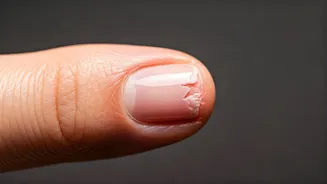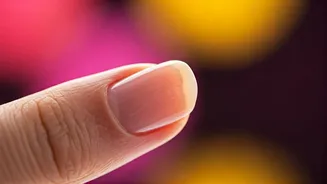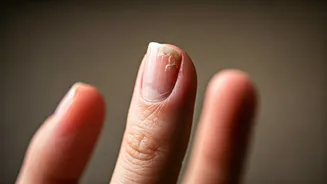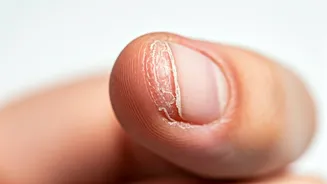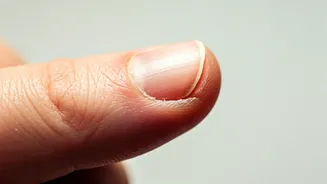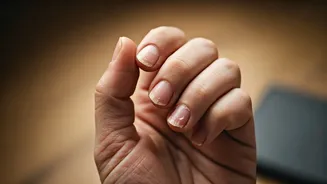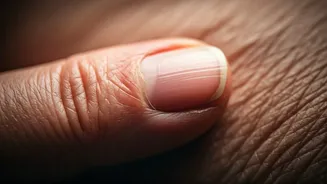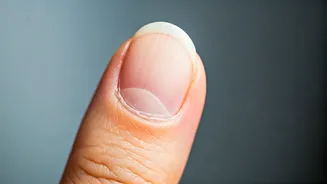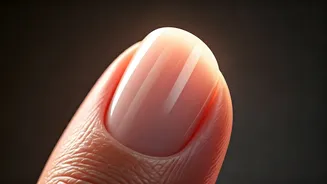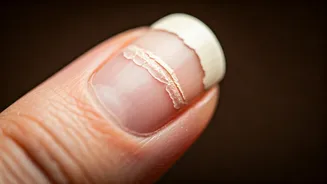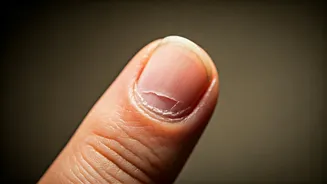Understanding Nail Health
Healthy nails offer important clues about your overall health. They are usually smooth, with a uniform color. Changes in appearance, like peeling or brittleness,
can be signals of various underlying issues. Nails are made of keratin, a protein also found in your hair and skin. Keeping nails strong and healthy requires a balanced diet and proper care. Factors like age, exposure to chemicals, and certain medical conditions can all impact nail health. Paying attention to your nails can help you detect potential health problems early on. A good understanding of the typical structure and function of nails is the foundation to identifying what causes nails to peel. This is important to understand the best approach to treating and preventing nail issues.
Medical Issue Insights
Several medical conditions can manifest in changes to the nails. For example, fungal infections are a common cause of brittle and discolored nails. Psoriasis, a skin condition, can also affect nails, causing pitting, thickening, and separation from the nail bed. Thyroid issues, both hyperthyroidism and hypothyroidism, can cause nail changes, including brittleness and slow growth. Iron deficiency anemia can lead to brittle nails that may also have a concave shape. In more severe cases, chronic conditions such as diabetes and peripheral vascular disease can impact nail health. Proper diagnosis is essential, so if you notice changes in your nails, it is important to see a doctor for medical attention.
Common Causes Identified
Beyond medical conditions, several everyday factors contribute to nail peeling. Frequent exposure to water and harsh chemicals, such as those found in cleaning products and nail polish removers, can strip away natural oils and cause dryness. Trauma to the nails, such as bumping them or biting them, can also lead to peeling and damage. Nutritional deficiencies, particularly a lack of vitamins and minerals like biotin, iron, and zinc, can weaken the nails, making them more prone to peeling. Environmental factors, like cold, dry weather, can also contribute to brittle nails. Regularly moisturizing the nails and cuticles and avoiding prolonged exposure to irritants are important actions to take in protecting nail health. Certain cosmetic procedures and habits can further worsen the problem.
Effective Remedy Options
Treating peeling nails involves addressing both the underlying cause and the symptoms. If a fungal infection is present, antifungal medications, either topical or oral, might be prescribed by a doctor. For nutritional deficiencies, increasing the intake of essential vitamins and minerals through diet or supplements can help improve nail health. Keeping nails moisturized with a good quality hand cream or oil is crucial for hydrating them and preventing further damage. Gentle nail care practices, such as filing nails in one direction and avoiding harsh nail treatments, are also advised. If you are experiencing problems, consult a doctor to get an accurate diagnosis. The approach to treating the nails will depend on the cause and the severity of the problem.
Preventative Strategies Revealed
Preventing nail peeling involves a combination of lifestyle adjustments and nail care practices. The use of protective gloves when handling water and chemicals is critical in safeguarding the nails from damage. Maintaining a balanced diet rich in vitamins and minerals is essential to nourish the nails from within. Staying hydrated is also very important, as this can improve the overall health of your nails and skin. Avoid biting, picking, or over-manipulating your nails to prevent trauma. Regular trimming can maintain the length of your nails and keep them strong. Using nail polish remover sparingly, and choosing options without harsh chemicals, will also protect your nails. These tips will help maintain the health and appearance of your nails.
